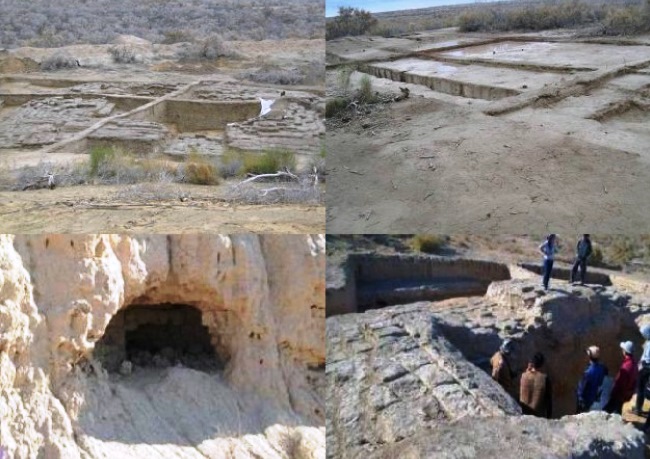 18, Июнь, 2015
18, Июнь, 2015The ancient city of Rabat Ciric at the bottom of a dried-up sea
Achievements of the first decade of this century in the field of archeology are the work of a professor of the Kazakh Abylai Aydosova for the study of ancient remains of ancient settlements buried under a layer of the Aral Sea or the coastal sand. One of these cities is the ancient city of Rabat Ciric, located in the lower reaches of a tributary of the Syr Darya River — Zhanadari that 300 kilometers from Kyzylorda.

Excavations Ciric Rabat were started in the fifties of the last century, however, all the excavations that were conducted in the area, were not very successful, since the majority of graves and found the remains of residential and religious buildings have been excavated and looted black archeologists in the eighteenth century. However, in the past year, another archaeological expedition led by Professor Abylaja Aydosova bit lucky unearthed one of the burial of a noble family, which had been looted, they found a second, which was located behind the wall. This burial because of its location were not looted and there were found household items, weapons and a variety of gold and silver jewelry, which today are found in the archaeological laboratory of the Institute of Archaeology A.Margulan.

According to preliminary data found artifacts once again confirm that the Rabat Ciric city really existed as a center of powerful and warlike tribe Saka-Dachau in the early XIV century. At the same time, according to ancient records, the authority Dakhov was so great that his soldiers took part in the famous expedition of Alexander the Great to India.

However, with the next change in the level of the Aral Sea, in connection with the drying of Zhanadari, value-Chirit Rabat start to fall significantly, and in the XIII century AD, the inhabitants of this city, as well as several dozen other cities in the region, left the place and moved to more favorable areas modern Kazakhstan.

So, if you’re traveling along the coastal area of the Aral Sea, then please note that under a thick layer of sand and the sea is dried up centuries-old history of this region.











